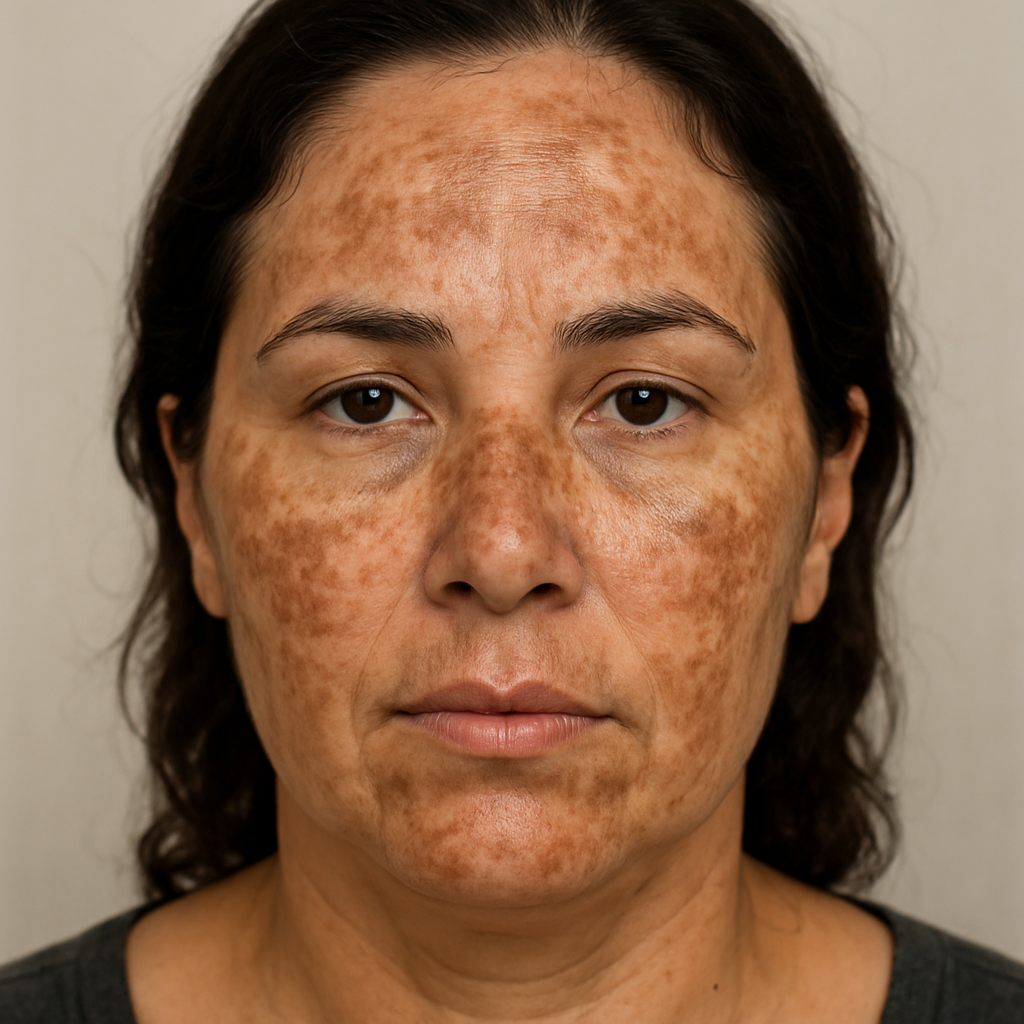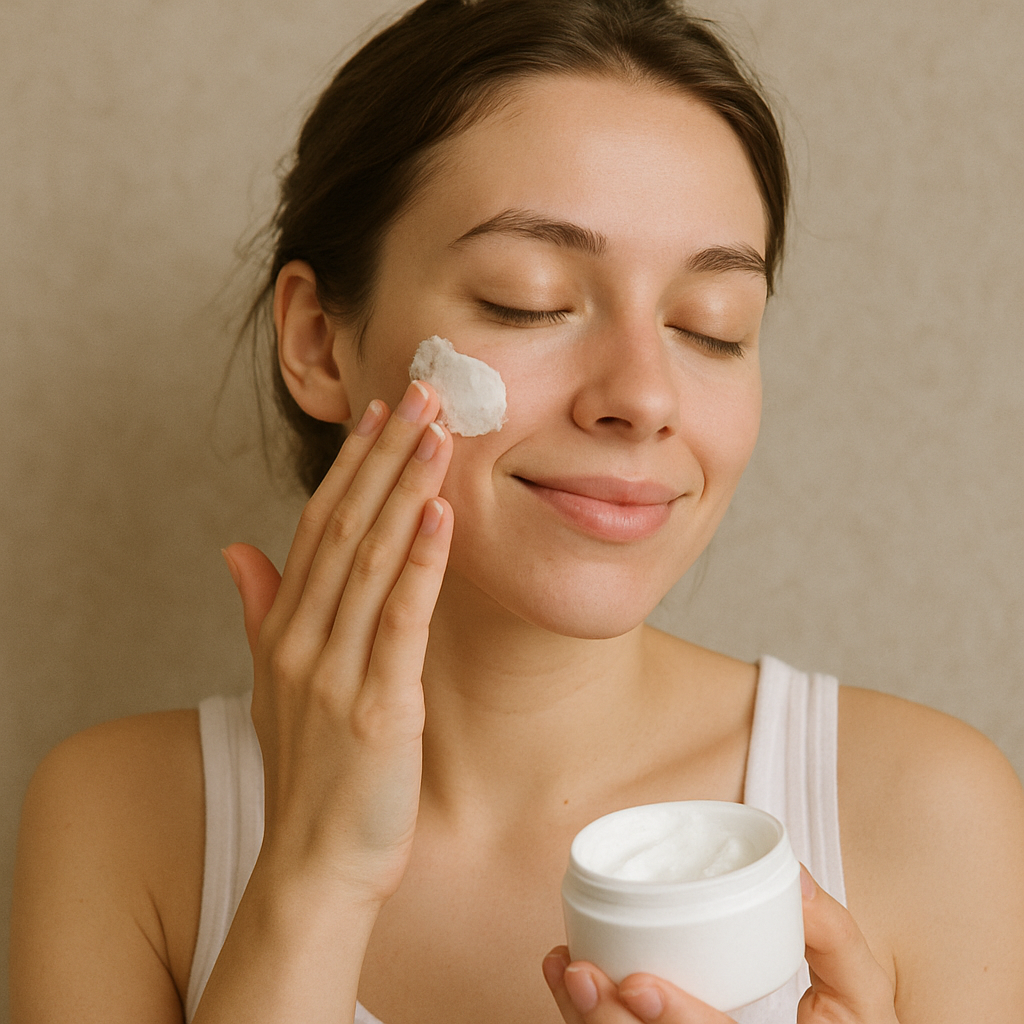
Melasma, often referred to as the “mask of pregnancy,” is a common skin condition that causes brown or gray-brown patches, mainly on the face. It typically appears on the cheeks, forehead, bridge of the nose, and chin. The condition is more prevalent in women, especially those with darker skin tones, due to their higher levels of melanin.
Causes of Melasma
While the exact cause of melasma is not fully understood, it is believed to be related to hormonal changes, sun exposure, and genetic predisposition. Hormonal fluctuations, particularly during pregnancy or with the use of birth control pills, can trigger melasma. Sun exposure is another significant factor as UV rays can exacerbate pigmentation issues, making them more noticeable.
Risk Factors
Several factors can increase the risk of developing melasma. These include a family history of the condition, hormonal changes, and prolonged sun exposure. People with darker skin tones, such as those of Latin, Asian, or African descent, are more prone to melasma due to their naturally higher melanin content. Additionally, certain medications and cosmetic products that irritate the skin can also contribute to melasma.
Diagnosis and Treatment
Diagnosis of melasma typically involves a visual examination by a dermatologist. In some cases, a Wood’s lamp test may be used to determine the depth of skin discoloration. Treatment options can vary depending on the severity of the condition, but topical lightening agents, chemical peels, and laser therapy are common methods used to manage melasma.
Key Ingredients in Lightening Creams
When selecting a lightening cream for melasma, it’s crucial to look for key ingredients known for their skin brightening properties. These ingredients work by targeting melanin production and promoting a more even skin tone.
Hydroquinone
Hydroquinone is a powerful skin lightening agent that decreases the formation of melanin in the skin. It is often considered the gold standard in treating hyperpigmentation. Available in both prescription and over-the-counter formulations, hydroquinone is effective but must be used cautiously to prevent skin irritation.
Kojic Acid
Kojic acid is derived from fungi and is known for its ability to lighten skin by inhibiting the production of melanin. It is a natural alternative to hydroquinone and is often included in lightening creams due to its effectiveness and lower risk of side effects.
Vitamin C
Vitamin C is renowned for its antioxidant properties, which help in neutralizing free radicals and brightening the skin. It also aids in reducing dark spots and improving overall skin tone. Vitamin C is a popular ingredient in lightening creams due to its dual role in protecting and rejuvenating the skin.
Niacinamide
Also known as Vitamin B3, niacinamide improves skin tone and reduces the appearance of dark spots. It offers anti-inflammatory properties and helps in strengthening the skin barrier, making it an ideal ingredient for those with sensitive skin types.
Arbutin
Arbutin is a natural compound that helps lighten skin and fade dark spots. It is derived from the bearberry plant and works by inhibiting the enzyme tyrosinase, which is involved in melanin production. Arbutin is gentle on the skin, making it suitable for those who cannot tolerate stronger lightening agents.
Top 5 Lightening Creams for Melasma

1. Obagi Nu-Derm Clear Fx
Obagi Nu-Derm Clear Fx is a top choice for those looking to lighten melasma. It contains arbutin and antioxidants, which help brighten skin and even out skin tone. This cream is suitable for all skin types and can be used as part of a complete skincare regimen. Its formulation is designed to improve the penetration of active ingredients, ensuring effective results.
Pros and Cons
Pros:
- Contains natural ingredients
- Suitable for all skin types
- Helps improve overall skin tone
Cons:
- May take several weeks to show results
- Higher price point
2. Murad Rapid Age Spot and Pigment Lightening Serum
Murad Rapid Age Spot and Pigment Lightening Serum is a potent formula that targets dark spots and discoloration. With the inclusion of hydroquinone and glycolic acid, it effectively exfoliates the skin, promoting a brighter complexion. The serum’s lightweight texture makes it easy to incorporate into any skincare routine.
Pros and Cons
Pros:
- Quick results
- Contains exfoliating ingredients
- Suitable for daily use
Cons:
- Not recommended for sensitive skin
- Requires sunscreen use during the day
3. SkinCeuticals Discoloration Defense
SkinCeuticals Discoloration Defense is a multi-phase treatment that targets all types of discoloration, including melasma. It combines tranexamic acid, niacinamide, and kojic acid, which work together to improve skin brightness and evenness. This serum is suitable for all skin tones and is often recommended by dermatologists for its efficacy.
Pros and Cons
Pros:
- Targets various forms of discoloration
- Dermatologist-recommended
- Lightweight formula
Cons:
- May cause dryness in some users
- Requires consistent use for best results
4. Paula’s Choice Resist Triple-Action Dark Spot Eraser
Paula’s Choice Resist Triple-Action Dark Spot Eraser combines the power of hydroquinone, glycolic acid, and antioxidants to target stubborn dark spots. This cream is designed for all skin types and helps exfoliate the skin while reducing discoloration. It is formulated to be non-irritating, making it a suitable option for daily use.
Pros and Cons
Pros:
- Affordable price
- Suitable for all skin types
- Exfoliates and brightens skin
Cons:
- Hydroquinone can cause irritation in some users
- Requires sun protection during the day
5. Ambi Skincare Fade Cream
Ambi Skincare Fade Cream is a budget-friendly option that effectively lightens dark spots and discoloration. It contains hydroquinone, alpha hydroxy acid, and Vitamin E, which work together to improve skin tone and texture. This cream is particularly popular for its moisturizing properties, which help maintain skin hydration.
Pros and Cons
Pros:
- Affordable
- Effective for dark spots
- Moisturizes while lightening
Cons:
- Contains fragrance, which may irritate sensitive skin
- Hydroquinone requires careful use
Tips for Using Lightening Creams Safely

by National Cancer Institute (https://unsplash.com/@nci)
When using lightening creams for melasma, it’s essential to follow these safety tips to protect your skin and ensure the best results. Proper application and adherence to guidelines can prevent adverse effects and enhance the efficacy of the treatment.
Patch Test
Always perform a patch test before applying the cream to your entire face. This helps ensure you don’t have an allergic reaction. Apply a small amount of the product on a less visible area, such as the inner arm, and wait 24 hours to check for any signs of irritation or allergic response.
Use Sunscreen
Lightening creams can make your skin more sensitive to the sun. It’s crucial to apply sunscreen daily to protect your skin and prevent further pigmentation. Choose a broad-spectrum sunscreen with at least SPF 30 and reapply every two hours, especially if you’re outdoors.
Follow Instructions
Use the cream as directed by the manufacturer or your dermatologist to avoid irritation or adverse effects. Overuse or misuse can lead to skin damage, so adhere to recommended application frequencies and quantities. Always read the product label and consult with a skincare professional if unsure.
Be Patient
Results may take several weeks or even months. Consistency is key to achieving the desired outcome. While it can be tempting to expect immediate results, it’s important to give the product time to work and incorporate it into your regular skincare routine.
Consult a Dermatologist
If you experience irritation or if the melasma does not improve, consult a dermatologist for further advice and treatment options. They can offer personalized recommendations and may suggest alternative treatments such as chemical peels or laser therapy if topical solutions are ineffective.
Conclusion
Melasma can be a challenging condition to manage, but with the right lightening cream, you can significantly reduce its appearance. When choosing a product, consider your skin type, the ingredients, and your budget. Remember to be consistent with your skincare routine and protective measures to achieve the best results. With patience and the right approach, you can enjoy a brighter, more even complexion. Stay informed and proactive in your skincare journey to effectively tackle melasma and boost your confidence.


